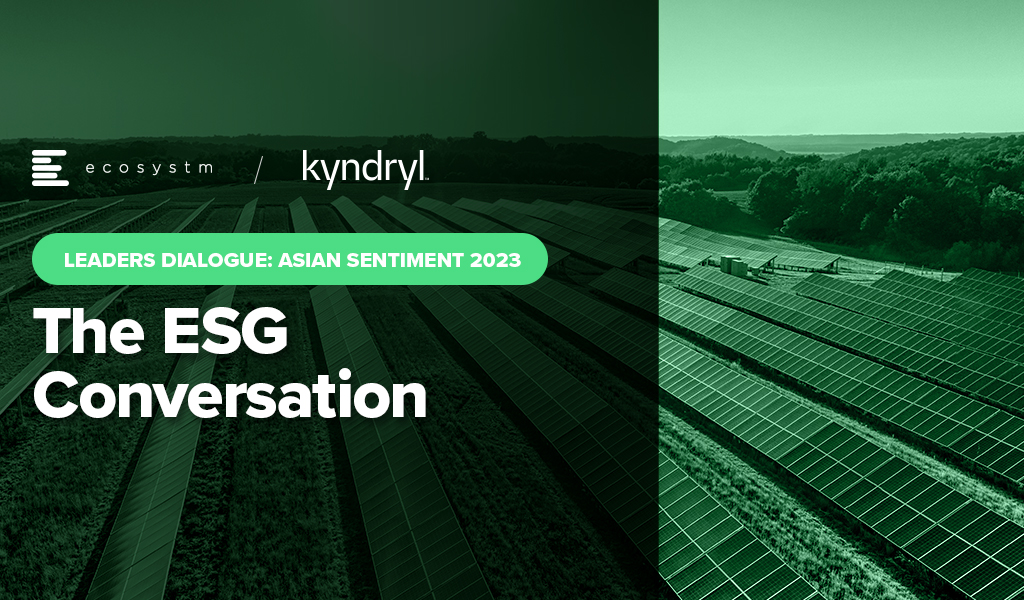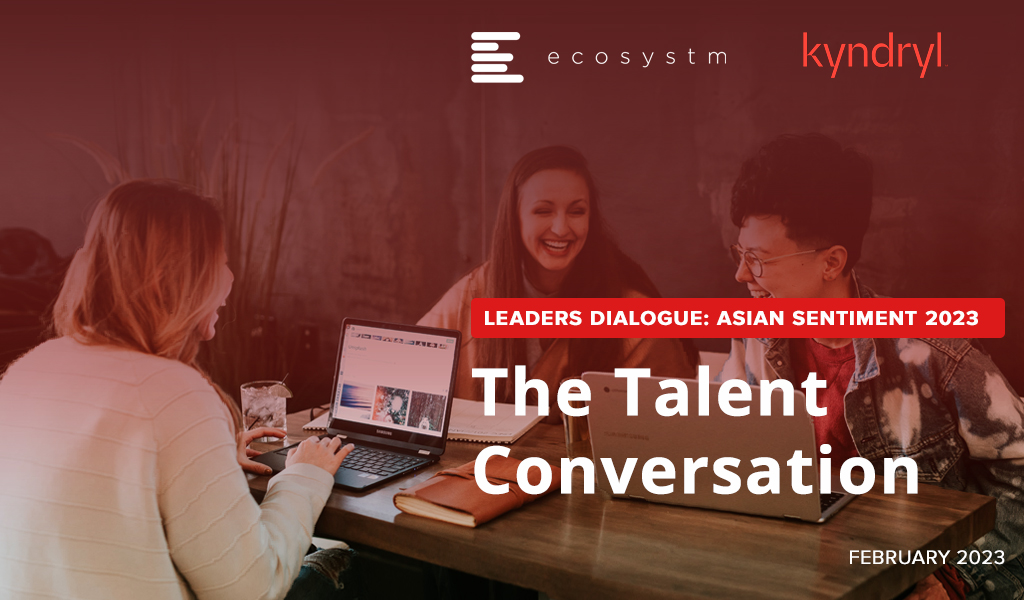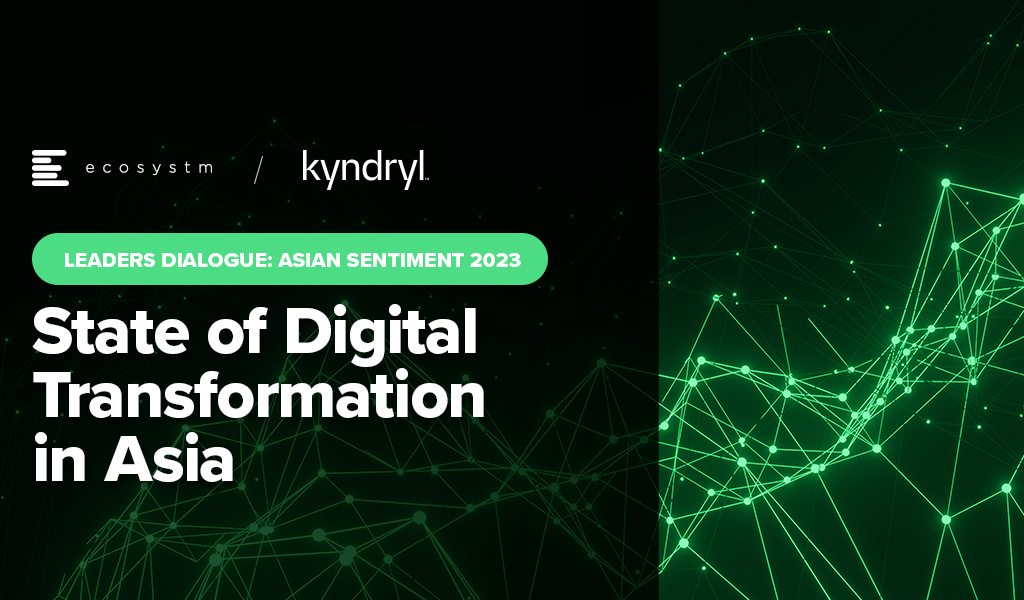We have seen a steady shift in people’s awareness of the environmental and social impacts of their actions. And this awareness, has led to a demand for sustainable and ethical practices from brands they interact with. Consequently, organisations are feeling the pressure to incorporate ESG factors into their business models to attract and retain customers; to nurture a purpose-drive talent pool; to address investor activism; and to comply with industry and country regulations.
At the Leaders Dialogue: Asian Sentiment 2023 conversation, Ecosystm Founder and Chairman, Amit Gupta; Ahmed Mazhari, President of Microsoft Asia; Padmashree (Paddy) Santosh, VP & Global Head of Learning, Diversity and Organisation Effectiveness at Olam Agri; and Luca Destefanis, Head of Marketing APAC at Kyndryl discussed the biggest drivers, opportunities, and challenges for Asian leadership in driving a sustainable future.
Here are the key takeaways:
- There has been a clear growth in a collective consciousness.
- ESG initiatives must start with a clear definition of the goals.
- It will require a multi-dimensional strategy that focuses on strategic alignment and people.
- ESG strategies need to be technology-enabled
- Ultimately, data is the key enabler of all ESG efforts
- Tech companies are focusing on expanding their ESG impact.
Read on to find out more.
Download The ESG Conversation as a PDF

People management has always posed challenges for businesses and their HR leaders. Leaders have to address skills shortages, develop strategies to attract and retain talent, and promote inclusiveness in their policies. Today’s digital landscape – where there is a scarcity of digital skills across industries – makes it even harder. Leaders are now paying close attention to employee experience and retention, and topics such as digital workplace, hybrid work, flexibility, and wellness have made it to management discussions.
At the Leaders Dialogue: Asian Sentiment 2023 conversation, Ecosystm Founder and Chairman, Amit Gupta; Ahmed Mazhari, President of Microsoft Asia; Padmashree (Paddy) Santosh, VP & Global Head of Learning, Diversity and Organisation Effectiveness at Olam Agri; and Luca Destefanis, Head of Marketing APAC at Kyndryl discussed where Asia is facing their biggest challenges in talent management and how to mitigate them.
Here are the key takeaways:
- Digital skills shortage is real
- Purpose empowers employees
- The ‘Productivity Paradox’ needs addressing
- Hybrid Work is the accepted norm
- Technology & Culture differentiate the employee experiences
- Getting workplace transformation right is crucial
Read on to find out more about the future of talent in Asia.
Download The Talent Conversation as a PDF

Today, Asia is home to nearly 60% of the world’s population and accounts for 39% of the global GDP. As the region’s importance continues to grow (7 out of the top 10 economies is expected to be from the region, contributing to 47% of the global GDP by 2030), investment in Asia is a key priority for governments and large corporates around the world.
With the region taking centre-stage, there is a growing optimism as opportunities open up for local economies. It remains a unique market – differentiated by a strong spirit of innovation, vibrant startup ecosystem, and propensity to leverage technology to transform.
At the Leaders Dialogue: Asian Sentiment 2023 conversation, Ecosystm Founder and Chairman, Amit Gupta; Ahmed Mazhari, President of Microsoft Asia; Padmashree (Paddy) Santosh, VP & Global Head of Learning, Diversity and Organisation Effectiveness at Olam Agri; and Luca Destefanis, Head of Marketing APAC at Kyndryl discussed where Asia is leading and lagging behind when it comes to tech-led transformation and innovation.
Here are the key highlights:
- Asia demonstrates a “Disrupt or be Disrupted Mindset”
- The need for innovation is encouraging corporate venturing
- There is a growing interest in emerging tech
- Yet organisations might be scratching the surface
- Outcome-led transformation will be the key
Read on for more insights into Asian sentiment.
Download State of Digital Transformation in Asia as a PDF































